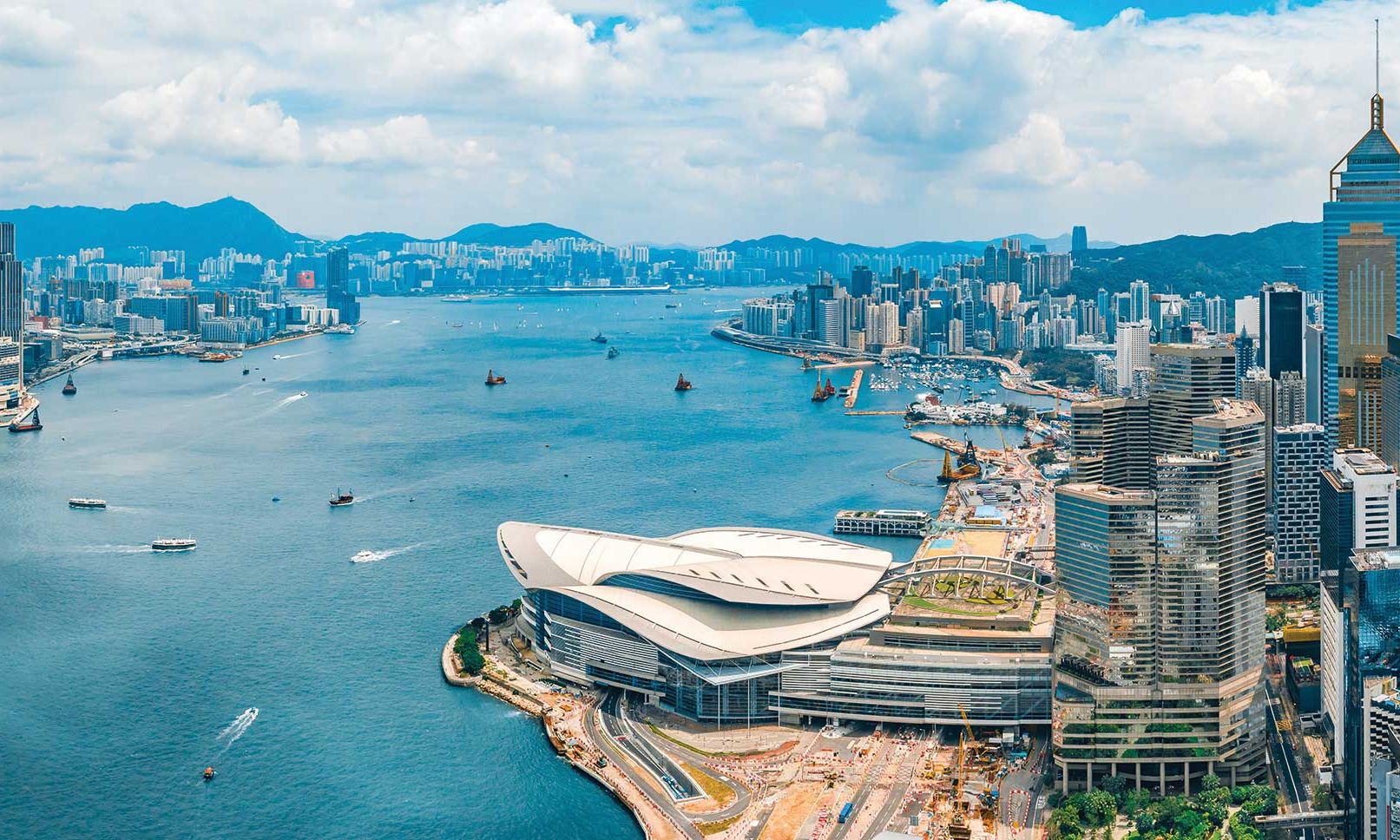Let the good times roll: the Hong Kong Exhibition Centre, venue for Art Basel Hong Kong, whose director, Angelle Siyang-Le, says the city has seen exponential post-pandemic growth
Photo: Yiu Cheung
After four years of hiatus or operating at reduced scale, Art Basel Hong Kong is back to its pre-pandemic size, with 240 galleries from 40 countries taking part in its forthcoming edition. This year’s exhibitor count is 37% higher than last year, and just short of the 242 that participated in 2019.
While a handful of leading galleries that took part in 2019 are not returning, including Marian Goodman, Sean Kelly and Goodman, many major international names will be showing again, such as Sprüth Magers, Modern Art and Lisson. Joining them are 25 galleries exhibiting for the first time at the Hong Kong fair. Among the newcomers in the Discoveries section, devoted to solo presentations, is Fitzpatrick from Paris, which will show portrait paintings by Arthur Marie. Meanwhile the Insights section, focused on artists from the Asia-Pacific region, will welcome the first-time exhibitor √K Contemporary, from Tokyo, which is bringing works by Nankoku Hidai, one of the earliest and most influential figures in 20th-century avant-garde calligraphy. Also in Insights, the Taipei-based PTT Space will present works by the late painter De-Jinn Shiy, whose portraits from the 1950s to the 70s exploring queer desire are pioneering in East Asia.
Hong Kong’s resilience through the turbulent years of the Covid-19 pandemic is emphasised by the fair’s director, Angelle Siyang-Le, who was appointed in 2022. “The Hong Kong art scene has grown exponentially since the pandemic,” she says. “When we launched the fair in 2013, there were no world-class museums. Now, we not only have the Hong Kong Museum of Art and Tai Kwun, but also two new influential landmarks sitting alongside one another in West Kowloon: M+ for contemporary art—which reported 2,034,331 visitors for the whole of 2022—and the Palace Museum for antiquities. This pace of development is such a huge testament to the maturation of Hong Kong’s art ecosystem. I really believe that, now more than ever, people are going to see Hong Kong not just as the city of Art Basel Hong Kong or M+, but as the cultural hub of Asia.”
Art Basel Hong Kong director Angelle Siyang-Le
Photo: Tory Ho
Indeed, votes of confidence in Hong Kong are evidenced in Hauser & Wirth recently relocating in the city to a bigger space, and both Sotheby’s and Christie’s lauching new Hong Kong salerooms and headquarters this year. (Phillips opened its expanded Hong Kong headquarters last year). The city’s art market is, by some key measures, bouncing back from the pandemic. In 2023, Hong Kong art exports rose nearly 60% in the first quarter compared with the same quarter in 2022, according to the Art Basel UBS global collecting survey.
But stormy seas may lie ahead. Hong Kong has long benefited from trade with China. But a forecasted economic slowdown in the mainland, due in part to a cratering property market, is already impacting the special administrative region’s art scene, evidenced by disappointing November 2023 auction sale results in Hong Kong. And in the wider economy, the city’s stock market is struggling to come back from the pandemic and political crackdown, with the benchmark Hang Seng index falling for a fourth consecutive year.
“The slowdown in mainland China is something that we’ll certainly be watching closely,” says Art Basel’s chief executive, Noah Horowitz. “At the same time, the art market in Hong Kong has demonstrated extraordinary resilience despite recent challenges in the global financial sector and the continuing impact of three years of Covid.”
Increasing political alignment with China continues to imperil Hong Kong’s position as a leading arts hub too. Fears over increased control from Beijing have once again flared up following the announcement in January of a new proposed security law in Hong Kong targeting terrorism and espionage. Siyang-Le says: “The new legislation has not been passed yet and its implementation will be within the purview of the authorities and judiciary, but at this stage we do not anticipate any impact on the local art scene. Hong Kong’s arts and culture scene has continued to go from strength to strength in the last ten years and this trajectory has not been hindered by the introduction of the National Security Law in 2020.”
She also brushes off concerns that the city is currently experiencing a brain drain, as ambitious, wealthy and highly educated citizens, concerned by diminishing civil liberties, emigrate to the West and elsewhere in Asia. An estimated 250,000 Hongkongers have moved to the UK alone since Britain opened the route to residency for Hong Kong Chinese who hold British National (Overseas) passports. “Hong Kong has an unrivalled position as a cultural centre due to its geographical location at the heart of Asia, its place as a leading financial hub, its tax-free status, as well as its strong local art scene and a general public with a keen and growing interest in the arts,” Siyang-Le says.
Outside the fair hall, the city will see robust public programming, including a new video work projected on the facade of M+. This year it will be a site-specific “architectural film” by the artist and film-maker Yang Fudong. Shot in Hong Kong, the black-and-white film weaves together scenes from seaside villages and nocturnal city streets. According to Siyang-Le, the work is also intended to function analogically as a short poem, “blending moments from Hong Kong’s past and present to offer a glimpse into an unpredictable future”.
• Art Basel Hong Kong, 28-30 March, Hong Kong Exhibition Centre

